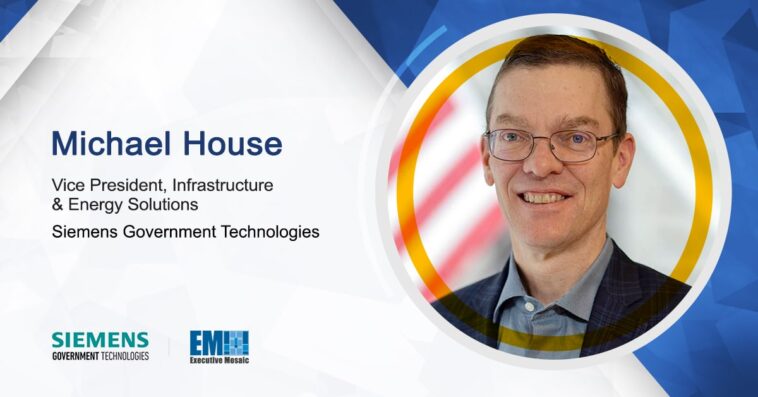Michael House, vice present of infrastructure and energy solutions at Siemens Government Technologies, believes advanced digital services can be a game changer for how federal agencies improve energy resilience and sustainability at their facilities and installations. An engineer by trade with over 30 years of experience in technical, program and business development in the federal sector, House has built a career on his deep understanding of energy management and how smart technologies can transform infrastructure at speed and scale.
In this Executive Spotlight interview, House mulled over various renewable energy sources and solutions in development, such as microgrids, and the necessity of partnership with private industry on the government’s part to ensure their swift and effective implementation.
Why are digital services a game changer for how federal agencies can improve energy resilience and sustainability at installations?
The U.S. federal government has more than 350,000 energy-utilizing buildings across its operations. That is a massive network of mission-critical facilities that must always remain secure and operable. These facilities have deferred maintenance needs that cannot be addressed with available budgets. Digital services enable Department of Defense facilities to continuously track, analyze and manage energy consumption and equipment health at their sites or within industrial processes—no matter where they are. Existing staff are then free to apply resources to other pressing needs.
By providing real-time visibility into energy consumption and equipment health, these solutions can support optimal energy use, enable better decision-making and reduce maintenance costs. For example, remote automated energy monitoring solutions from Siemens can immediately identify inefficiencies or irregularities in energy consumption and proactively detect energy waste by equipment malfunctions at multiple installations, transmitted in a secure manner to a centralized location. This ability to remotely monitor and manage energy performance across a network is critical for agencies overseeing installations in different geographic regions.
How can digitalization improve renewable energy integration?
Renewable energy generation and storage are integral to securing federal installations and establishing energy independence. Digital services optimize the integration of renewable energy sources, such as solar panels and wind turbines. These systems balance energy generation with consumption and help military bases transition to cleaner and more sustainable energy options. Yet, another important benefit of digital services is how they facilitate energy benchmarking and compliance, which goes hand-in-hand with clean energy initiatives. By comparing energy performance against predefined standards or industry benchmarks, these solutions can help agencies identify areas for improvement and set realistic goals for energy efficiency and sustainability.
What role will microgrids have in the future of energy resilience for federal installations?
As the U.S. federal government becomes increasingly dependent on resilient electric power solutions to accomplish missions, it must adopt innovative approaches to energy management. Microgrids enhance energy security by providing a decentralized and resilient energy infrastructure. In case of grid disruptions or emergencies, microgrids can operate independently or in conjunction with the main grid, ensuring continuous power supply to critical facilities such as military bases, government offices, and emergency response centers. Yet, the unique characteristics that make microgrids so valuable, are the same characteristics that often present barriers to adoption. That’s why it’s important for federal agencies to partner with private sector companies with the technology, expertise and experience to overcome implementation challenges and successfully deploy microgrids.
How is SGT helping federal agencies overcome barriers to implementing microgrids?
SGT has operational experience in serving federal customers with customized microgrid solutions. Because the needs of each installation vary considerably, microgrids will be equally different in their function and configuration. At SGT, we not only have real-world experience implementing microgrid solutions for military customers, we’re also able to draw on the total experience of Siemens, with operational microgrids in place today at universities, hospitals, research facilities and more. Our energy management offerings run the gamut, from holistic, end-to-end solutions or services to individual products and applications. Our design process avoids scope gaps and pain points during implementation.
What’s ahead for you and SGT in 2024?
As we work with our customers to address their resilient energy and smart infrastructure needs, we’re also very excited to tap into Siemens’ electronic surveillance portfolio to assist our customers across a broad range of physical and electronic security needs at their facilities. Recognizing that critical infrastructure is always a target, we can provide 24/7 monitoring through Siemens solutions that seamlessly integrate access control, intrusion detection and video surveillance into a single system. We are presently working through the necessary information security protocols and compliance steps to offer this exciting capability to our government customers this year!





